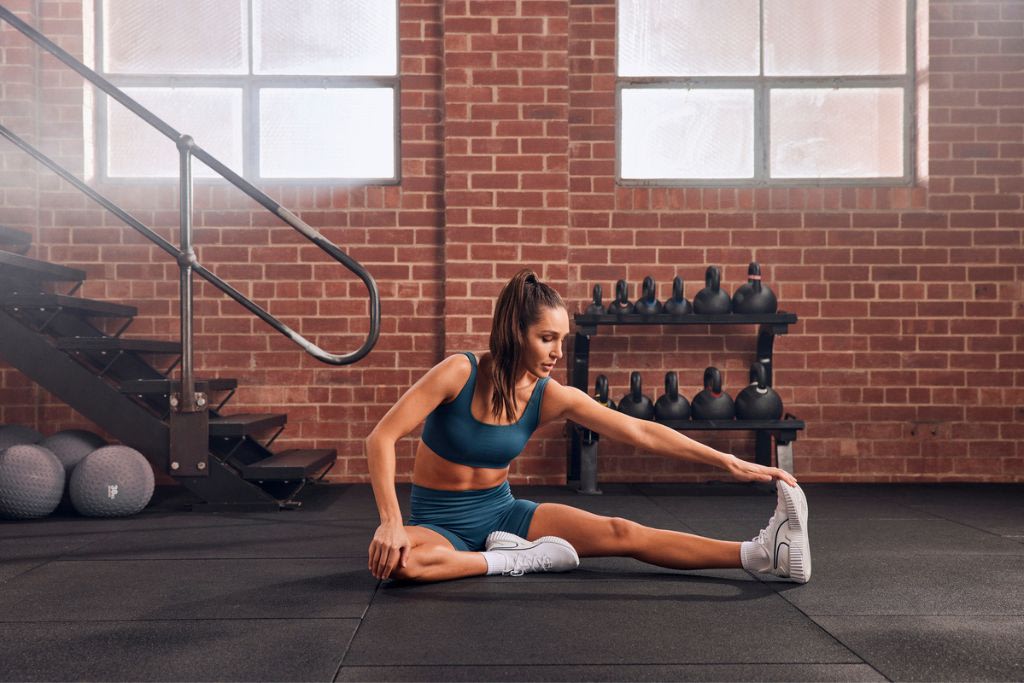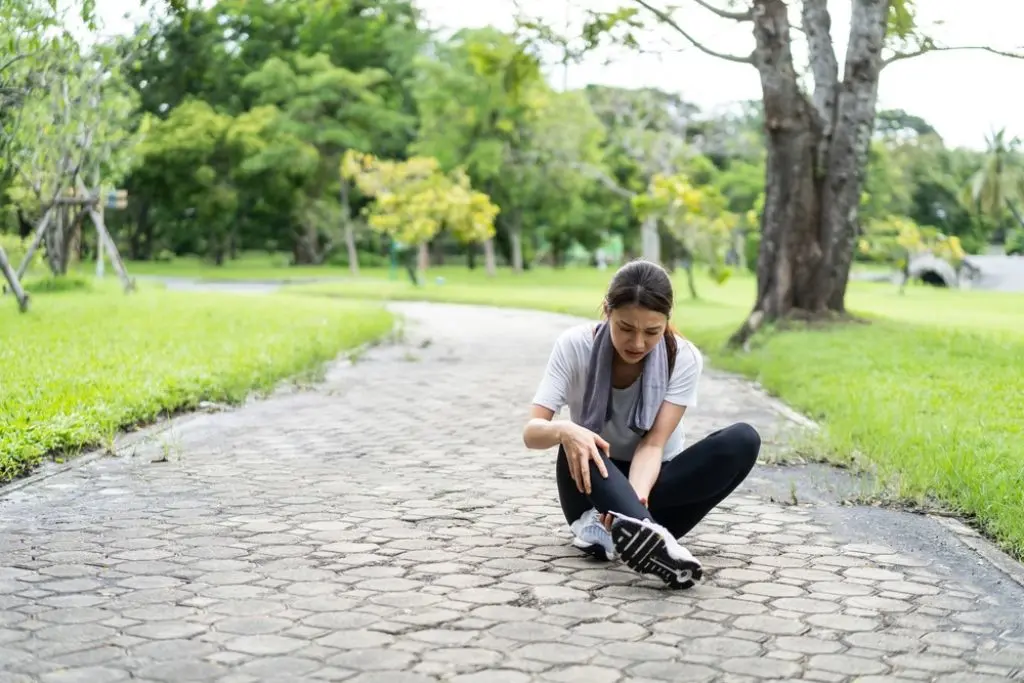What Causes Leg Cramps & How To Get Rid Of Them

May 16, 2021 - Updated November 1, 2023

It doesn’t matter if you’re mid-workout, in the depths of sleep or just chilling out on the couch, there’s nothing quite like a leg cramp to completely and painfully disrupt whatever you’re doing.
If you’re unfamiliar with leg cramps or haven’t had one in a while, the sensation is a sudden tightening pain as the muscle contracts, usually in your calf muscle below your knee. Some leg cramps last only a few seconds, while others can take a few minutes to go away completely, or leave you with lingering muscle pain for up to 24 hours, says the NHS.
Because leg cramps happen suddenly without any warning signs, the best things to know are what you can do to ease the pain as quickly as possible, and what causes leg cramps in the first place so you can reduce the chance of experiencing them at all!
Leg cramp causes and prevention tips
For most people, leg cramps tend to strike the calf muscle, but they may also affect your hamstring or quad. You can feel them in the sense that they’re very painful, but they can often also be felt as a lump or knot in your leg if you were to massage the area.
Leg cramps can happen during exercise, when you’re resting, or during sleep (one of the worst!). Here are some of the reasons behind that dreaded pain, regardless of when it decides to strike, and what you can do to prevent it from happening before it starts.
Muscle fatigue
Although there are several theories around what brings on a leg cramp during a workout, Sports Dieticians Australia says most scientists agree the primary cause is muscle fatigue. Exercise can cause an abnormal stimulation of the muscles in your legs and can cause an involuntary muscle contraction, which is more likely to happen if the muscle is already tired or shortened.
Cleveland Clinic adds that too much high-intensity exercise, muscle overuse or stress can also be factors at play.
Prevention tip: Listen to your body, prioritise stretching and recovery after each workout, and don’t skip your rest days - otherwise your muscles can become fatigued and tight. If your muscles are feeling tight, a warm bath or massage can help with relaxation.
Changes in blood flow or reduced circulation
Harvard Healthand Mayo Clinic say that constricted blood vessels and blood flow can also contribute, which can be a common issue if you work a deskbound job or your overall lifestyle is sedentary.
Prevention tip: Start all exercise with a good warm-up, especially if you are doing any high-intensity exercises. You’ll find optional warm-up exercises in every Sweat workout if you’re not sure what to do.
If you work a desk-bound job or spend a lot of time sitting, remember to have regular movement breaks during the day to promote good circulation.

Hot temperature
2019 research has shown that for sportspeople, the majority of cramps occur in hot weather, especially when the body hasn’t had a chance to acclimatise yet. This can also contribute to heat exhaustion and further muscle fatigue.
Prevention tip: Schedule your workouts for cooler times of day, keep yourself hydrated and don’t be afraid to reduce the intensity if you’re feeling hot or lightheaded.
Dehydration or mineral deficiency
As highlighted by the Mayo Clinic, too little potassium, calcium or magnesium in your diet can cause leg cramps, and dehydration can contribute even further to the loss of these electrolytes.
Prevention tip: Aim to drink around two litres of water each day and enjoy a balanced, nutritious diet to prevent any deficiencies in vitamins and minerals such as potassium or magnesium. If you’re sweating a lot, remember to season your food with salt.
Alongside a nutritious diet to top up all of those vitamins and minerals, drinking plenty of water is also essential for your body to transport nutrients to your muscles and support their optimal functioning, and you can also lose important nutrients through sweat. Keep a water bottle nearby and sip regularly, especially if you’re in hot weather, exercising frequently or tend to sweat a lot.
Medications
Besides your movement habits, diet and environment, leg cramps can be an unwanted side effect of some medicine, so it could be worth having a conversation with your healthcare provider if you think your medication is to blame.
Prevention tip: Check the side effects of any new medication before you start taking it, and don’t be afraid to ask your doctor for other options if regular cramps are an issue.
Pregnancy
Muscle cramps are a common experience during pregnancy and can be caused by any of the same factors above, especially muscle fatigue as your body starts to carry the extra weight of your baby.
Prevention tip: The treatment and prevention tips provided by the American Pregnancy Association are similar to the recommendations for a non-pregnant person, but always check in with your healthcare provider if your symptoms are worrying you, and always get clearance before starting any prenatal exercise program.
How to get rid of leg cramps
When a leg cramp sets in, the best things you can do to ease the pain quickly are stretch, massage or walk it out - as uncomfortable as it might be to do! If you experience the odd cramp here and there, it might take some experimentation to figure out which technique remedies the discomfort the fastest.
If the pain continues to linger after the initial cramp has subsided, Cleveland Clinic recommends applying an ice pack, heat pack, taking a warm bath, or elevating your leg to see if it eases the tightness. Staying active can also promote blood flow to the area.
Depending on which muscle is cramping, you might want to try some of these simple stretches:
Two easy calf stretches
Standing in a split stance with one foot in front of the other, bend your front knee and straighten your back knee as you sink into a static lunge, pushing back heel towards the floor for a deeper stretch in your calf muscle.
Place both hands on the floor slightly further than shoulder-width apart, with your feet together on the mat behind you while resting on the balls of your feet. While maintaining a neutral spine and engaging your abdominals, elevate your hips to create an inverted ‘V-shape’ similar to a downward-facing dog. With knees slightly bent, press your heels into the mat and tilt your tailbone upwards. For a deeper stretch in your right calf, you would bend your left knee and press your right heel into the mat (and the reverse for your left calf!).
Two Easy Hamstring Stretches
Standing with your feet hip-width apart and your legs straight, bend forward from your hips and reach towards your toes with both hands. Rest your hands on the mat, feet, or on your shins — whichever is most comfortable. You can hold this as a static stretch, or for a dynamic stretch, slowly bend one knee at a time, alternating sides and breathing throughout.
120 SECS 60 Per Side
Start by lying flat on your back on a yoga mat. Bend your knees and position your feet hip-width apart on the mat, keeping your spine in a neutral position. Extend your right leg towards the ceiling and place your hands behind your knee, shin or ankle — whichever is most comfortable, keeping your tailbone on the floor. Hold this position for the specified amount of time, breathing throughout. Each time that you exhale, try to draw your leg in towards your torso to deepen the stretch, ensuring that your spine remains in a neutral position and your tailbone remains on the floor. Repeat on the other side.
An Easy Quad Stretch
Stand with your feet slightly further shoulder width apart. Bend your right knee and bring your foot back directly behind you so that you can hold it with one or both hands. You should feel a stretch in the front of your right leg. If you’re struggling to balance, focus on a spot directly ahead of you, extend your left arm or hold a chair for balance. Repeat on the other side.
Dealing with leg cramps
Breathe out, stretch it out, walk it out. Whether you’re getting leg cramps at night or while you exercise, there are ways to deal with them and prevent them from happening.
If you find you are experiencing cramps regularly (or any other type of cramp) and these tips aren’t helping, make sure you speak to your healthcare professional. Always listen to your body!

A more empowered you starts with Sweat, and our editorial team is here to bring you the latest fitness tips, trainer recommendations, wellbeing news, nutritional advice, nourishing recipes and free workouts.
* Disclaimer: This blog post is not intended to replace the advice of a medical professional. The above information should not be used to diagnose, treat, or prevent any disease or medical condition. Please consult your doctor before making any changes to your diet, sleep methods, daily activity, or fitness routine. Sweat assumes no responsibility for any personal injury or damage sustained by any recommendations, opinions, or advice given in this article.
Wellbeing